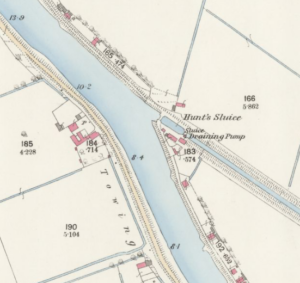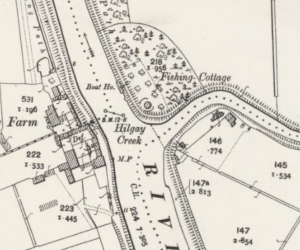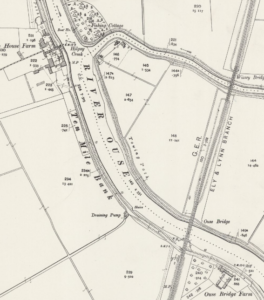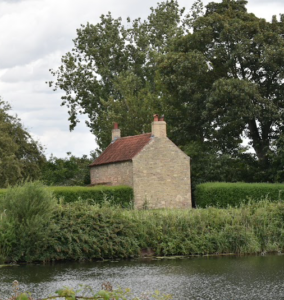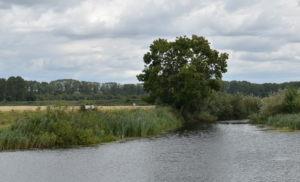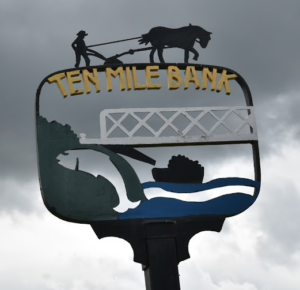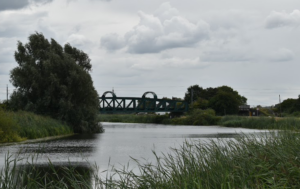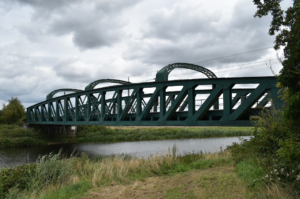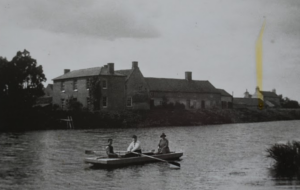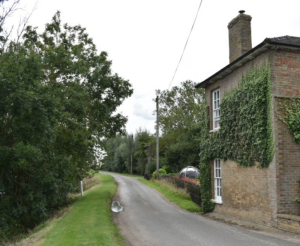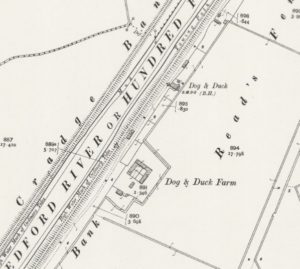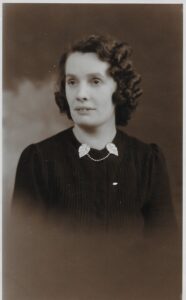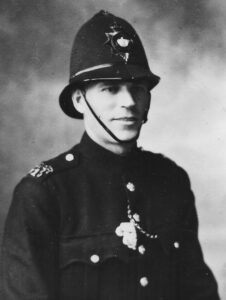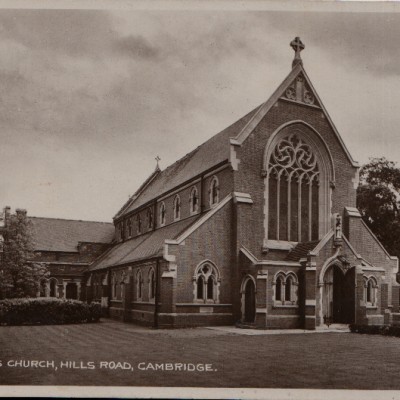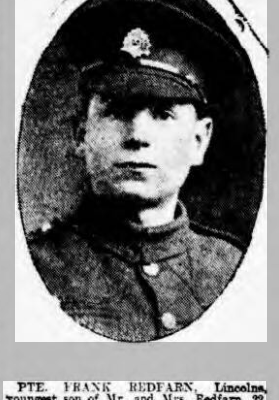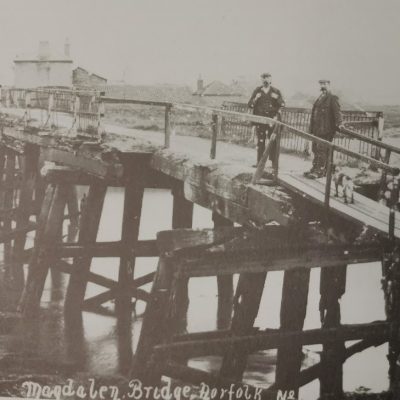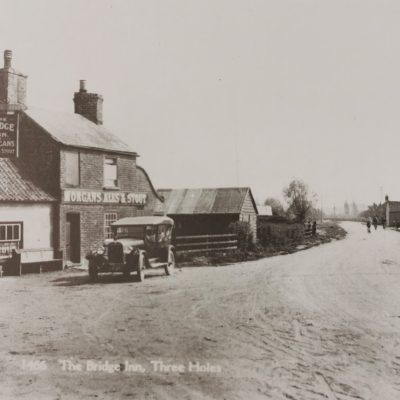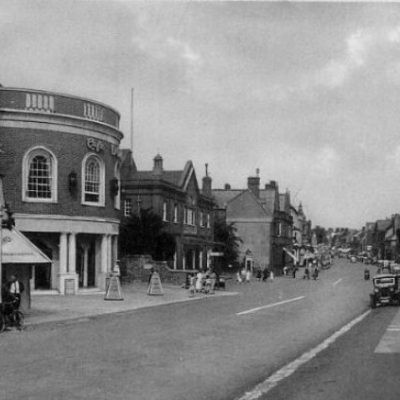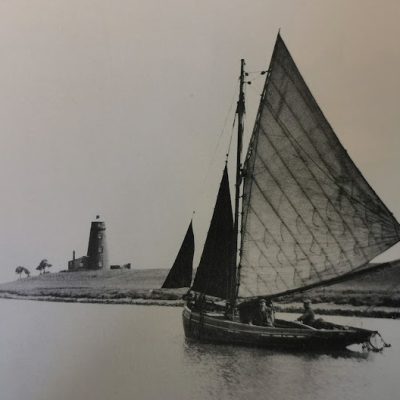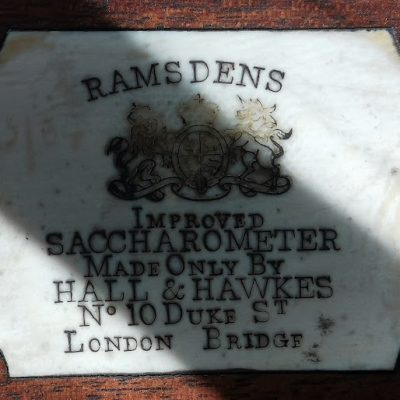Search by topic
- archaeology
- Building of Local Interest
- charity
- church
- crime
- dressmaker
- fire
- Great Eastern Railway
- Listed building
- Mapping Relief
- medieval
- oral history
- poverty
- Public House
- Rattee & Kett
- Religious House
- Roman
- scholar
- school
- Then and Now
- tudor
- women
- work
- world war one
- world war two
Search by text
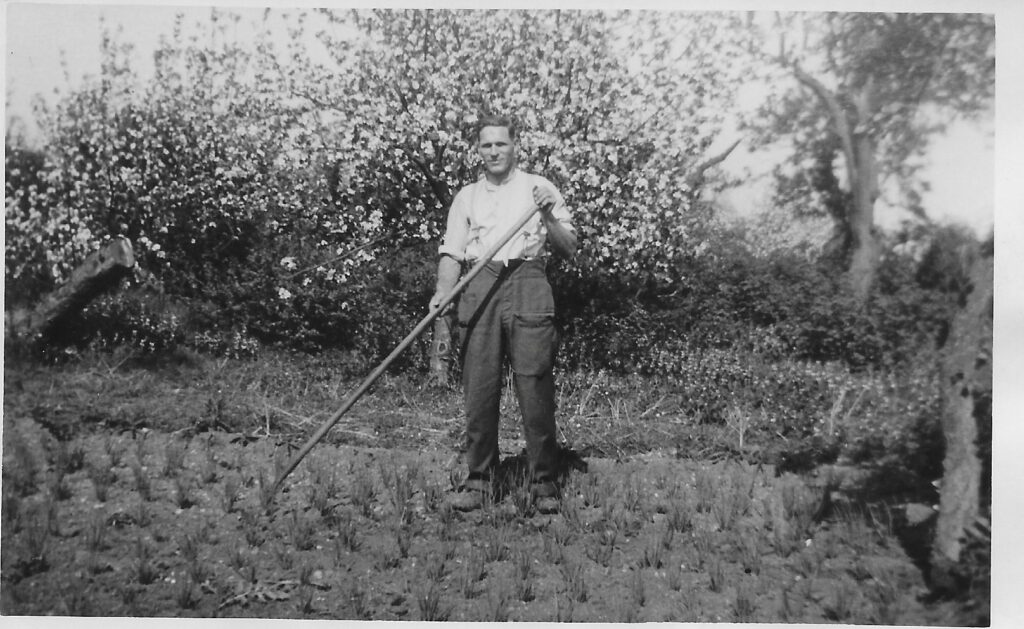 Levi Armsby
Levi ArmsbyOuse Bridge nr Ten Mile Bank nr Hilgay
History of Ten Mile Bank, Hilgay
My life in the army, Levi Armsby’s autobiography has a vivid description of where his family lived in relation to the Ouse River and the settlement of Ten Mile Bank. About a mile north of Ten Mile Bank on the east bank of the river is Hilgay Creek, the location described in the 1911 census. His home seems likely to be one of the buildings on the map very close to the ‘R’ of ‘RIVER.’ The location of the 1901 house is a little less clear but must have been closer to Ten Mile Bank. On page 32 of his memoirs he refers to the first house as being at Hunts’ Sluice, the second at Hilgay Creek. In 2023 very little remains of most of these buildings above ground.
The second house at Hilgay Creek had been a public house. It had two bedrooms, sitting-room, living room, kitchen and along pantry where the beer was kept. The customers were largely bargemen and their horses were kept in a stable there.
1901 census: River Bank [Near Hunt’s Sluice]
Robert Armsby, 27, journeyman agricultural labourer
Rosseta, 27, b Brand Creek
Albert, 2, b Ten Mile Bank
Harriet, 1, b Ten Mile Bank
In 1891 Robert Armbsby was living in Southery, Norfolk.
In 1881 he was with his parents on the River Bank, Hilgay.
1911 census: Hilgay Creek, Denver Sluice
Robert Albert Armsby, 37, farm labourer, b Hilgay
Rosetta, 37, married 13 years 4 children still alive 2 died, b Feltwell
Albert, 12, at school, b Hilgay
Harriett, 11, at school, b Hilgay
Levi, 9, at school, b Hilgay
Edith, 3, b Hilgay
Levi Armsby wrote an autobiography, unpublished, of which the first volume is called ‘My Memoirs’. The Museum of Cambridge was sent a copy by Levi’s descendant in 2023.
His father’s name was Robert Albert Armsby. He had four brothers. Uncle Harry was married and had a family of two boys and two girls. They lived about a mile away at Ten Mile Bank.
Uncle Fred was a professional soldier who had married in London and had one son. During WWI he had developed TB; he was discharged and came to live with Aunt Alice and cousin Eric in Denver. He died after about 12 months and Aunt Alice died 9 months later.
Uncle Charlie lived with his mother in Hilgay. He farmed about 6 acres of land and was a part-time mole catcher. Levi only saw his grandmother once when he was 8. She never visited and he was told never to visit her.
Levi’s mother’s name was Rosetta Porter before her marriage. Her sister Hannah married a John Bowers and they lived in Southery. Grandparents Porter were small farmers near Southery.
Levi was born in a four roomed cottage that stood end ways to the east bank of the Great Ouse river. There was a living room, kitchen, two bedrooms and a tool shed against the river bank.
Stretching south from their home towards Ten Mile Bank, Levi describes his father’s long garden. Then there was a small farm owned by Dibber Brundle; his wife would sometimes go and live with her brother who kept a pub near Ten Mile Bank bridge. Next there was Hunt’s Sluice with a hump back bridge. There was a pumping engine here.
Further south was the old house where his grandfather used to live, then inhabited by a spinster known as Liz Walter Catlin. Next there were other houses and a Baptist chapel. Further on was the house of a shoemaker named Pell who made shoes and boots by hand.
Another 100 yards further on were Mr and Mrs Jim Kerridge who worked a steam engine with a huge paddle wheel which drained water from West Fen Hilgay into the Ouse, as well as farming five acres of land.
Then there was the family of another Robert Armsby, four boys and three girls and a farm of about 200 acres.
Levi’s father worked, when he was young, for Tom Howlet, a farmer on the opposite side of the river.
Levi started school when he was four in the infants class at ten Mile Bank. His teacher was Miss Bedford.
When he was about 5, circa 1907, the family moved to Hilgay Creek (see map). Their house was owned by farmer Bob and Levi and Bob’s children would go to school together.
The headmaster of the school was called Eldekin. Other teachers were his daughter, Miss Eldekin, Miss Williamson and Miss Brown.
The lyrics of ‘Daddy Neptune’ one of the songs sung at school can be found here:
https://www.ingeb.org/songs/daddynep.html
When children were to be born, the doctor in Downham Market was sent for. The midwife was Mrs Long who lived on Hell’s Row.
Circa 1913 Levi moved to a new school built beside the Station Road, a further 1/4 mile to walk.
He describes the two shoemakers of Ten Mile Bank. Charlie Stone was a bachelor and lived with his mother on the south side of the village next to the river. Charlie was very interested in boxers, in particular Jack Jackson.
The other shoemaker was Mr Pell who lived on the east bank. He was particularly known for making thigh and knee boots, important for workers in the Fens. Mr Robinson lived with Mr Pell and he worked on their three acres of land.
Ten Mile Bank depended on the businesses in Hilgay. For example, the butcher would take his cart as far along the road or drove towards the river as he could, and then he would use a carrier, a piece of wood 4 feet long and 2 feet wide scooped out in the middle with two short handles at each end. He loaded it with the meat that he expected his customers would want, then carried it on his shoulders along the river bank or across the fields to where people lived. The baker was known as Doughy Ostler.
Levi records that his father was a labourer on the new railway bridge over the Ouse shown in the 1904 map. Ouse Bridge became the official name for the local area.
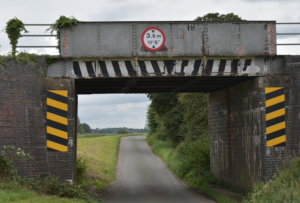
Ouse railway bridge. This part of the bridge was requested by local farmers at the time it was built. ©RGL2023
He recalls how the levels of water in the rivers would change considerably. When the Denver Sluice gates were open, there was just a narrow channel of water with a long sloping area of mud where both rivers met. This area included a round house known as the Fishing Cottage. It had a pike as a weather vane on the top. Mr Fuller, the gamekeeper, occupied the ground floor of the cottage and were caretakers for the owner, Squire Pratt. Squire Pratt lived in Ryston Hall neat Downham Market; he owned large estates in the area and fishing rights of the River Wissey and the Ouse from the Creek to Denver Sluice.
On the west side of the Ouse, Martin Brothers of Littleport owned and farmed about 1,000 acres of land with four farm yards. This was where Levi’s father worked for many years as a toolman. During the winter months their job was to dig clay to enrich the soil. Levi’s father was one of two regular thatchers that the Martin brothers used. His father was well known for his reliably waterproof thatching.
One of the places that Levi notes where they thatched was Ben Lister’s farm beside the Hundred Foot River close to the Dog and Duck pub. [See map above]
Levis left school when he was 13 years and 4 months old in 1914.
Further south than the Dog and Duck was another farm where they did thatching. It was near a pub called the Pig and Whistle or Wry Neck.
Levi’s father had a pleasure boat which was often let to people on holiday. Two families called Ball and Dyke from Downham Market were regular visitors in the summer time. The two families went on to form a company and built cinemas in Downham Market and Kings Lynn.
When Levi was about 10 years old, c.1911, a family by the name of Butcher cam to live in one of the two houses known as the Rodham on Martins farm near the Top farm yard. There were two girls, Dorothy and Edith, and three boys, Ned Edward, Horace and Perce. Levi became friends with them and was eventually to marry Dorothy.
At the outbreak of war, Mr Butcher and two other married men on the farm joined the army.
One of their neighbours was Jack Howlett. He and his wife had been flooded out of their home in Southery Fen after the river Little Ouse had burst and flooded several thousand acres of fen land in 1915 and again in 1916.
Levi’s recalls that on 4th August 1914 he was harvesting oats when Mr Turner came into the field to report that six Germans had been killed. His Uncle John Bower’s son Harry joined up. His Aunt Hannah found it very difficult to manage without her husband so Levi went to live with her family when he was 15. The family grew five to ten acres of celery every year.
Later Levi moved to working for Jack Howlett for which he was paid 25 shillings a week. One of the places he worked picking and storing onions was at Poppylot Hall, a place which had probably been made uninhabitable by flooding. The local pub was the Poppylot Ship.
In 1919 there was a shortage of labourer so Levi had no problem in getting a job on one of Fred Hiam‘s farms. He was cleaning out dykes for which he was paid 36 shillings a week.
‘Memoirs’ closes in 1921 when Levi and his friend Les Walker are considering whether to join the police force or the army.
The second volume of Levi’s autobiography is ‘My Life in the Army 1921 – 1928’:
This follows his life after he joins the infantry and is sent to Ireland at the time of the struggle for Irish independence. Levi is then sent out to India. On his return to England he is based at Colchester and can visit his family in Norfolk regularly. In 1926 he married Dot and they lived near the barracks. Their first son died from meningitis. Levi trained as a army boot repairer with a Mr Butler. As always, his writing is full of interesting details and anecdotes.
Contribute
Do you have any information about the people or places in this article? If so, then please let us know using the Contact page or by emailing capturingcambridge@
License
This work is licensed under CC BY-NC-SA 4.0






